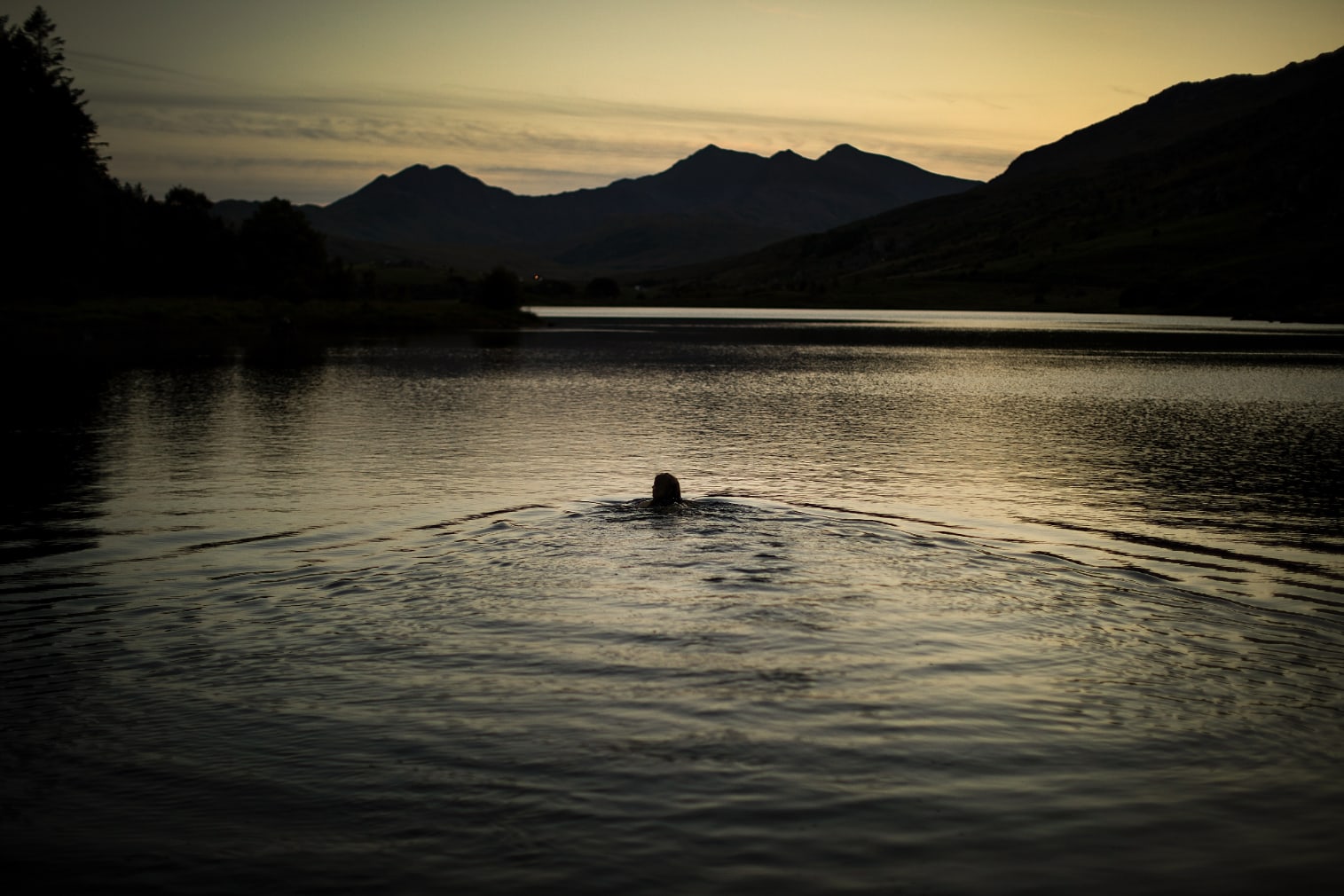
Though the term ‘bucket list’ has now become completely ubiquitous. Mae Losasso asks what it is about this intangible collection of dreams that has become so popular.

Mount Snowdon has been making headlines lately. ‘Snowdon: Llanberis residents kept awake by 24/7 tourists’, reads one headline in the BBC; ‘Snowdon to wage war on plastic’, says a Manchester Evening News article; while The Guardian ‘Calls for visitors to ‘respect’ Snowdon’.
Keeping residents from sleeping, scattering a trail of litter in their wake, and trampling the natural slopes, people have been going mad for the Welsh peak; even in August’s dreary weather – with views obscured by dense fog and drizzle – climbers had to queue to reach the summit. Britain’s third highest peak, Snowdon has long been a site of national interest, an attraction for avid walkers from the UK and beyond – but queuing to reach the summit? What on earth has happened to Mount Snowdon?
In short: nothing. No electromagnetic field is pulling tourists up its slopes; no bougie restaurant now adorns its peak; no theme park, no special attraction, no new promise of any sort has graced either track or trail of the Welsh mountain. Yes, the Hafod Eryri Summit Visitor Centre got a redesign in 2009, but that decade-old shell of a building – pleasant though its cafe and gift shop may be – cannot account for the hordes of hikers: it’s been shut throughout the 2021 season and won’t be opening again until 2022. What, then, is driving crowds of people up the slopes?
My guess? The bucket list.
ArrayThings-to-do-before-I-die
Writing in 2021, the term ‘bucket list’ has become completely ubiquitous – everyone knows what it is, and most people have their own, lodged somewhere in the recess of their mind: “Things-to-do-before-I-die” (apart from Pete Townshend, for whom death was apparently on the bucket list, but before he got old). The concept of the bucket list is probably as ancient as humanity itself – cognisant of our mortal existence, it’s no wonder that we should devise a little list of desires – things to see, to accomplish, to experience – before our time is up.
But the term ‘bucket list’ is a relatively new one. Of early 21st century descent, the phrase was first used by Patrick M. Carlisle in his bizarre book, Unfair & Unbalanced: The Lunatic Magniloquence of Henry E. Panky. “So, anyway,” Carlisle writes, “a Great Man, in his querulous twilight years, who doesn’t want to go gently into that blacky black night.
He wants to cut loose, dance on the razor’s edge, pry the lid off his bucket list!” Yet it wasn’t the 2007 film, The Bucket List, starring Morgan Freeman and Jack Nicholson as cancer-ward escapees, that the term was really popularised. Within ten years, the phrase had become widespread: everyone had their own bucket list, and life had literally become a to-do list.
Google search ‘bucket list’ today and the top hits will likely be: ‘1000+ bucket list ideas’ or ‘101 bucket list ideas’, and so on. There’s also bucketlist.org, the official bucket list website, which promises “Your dreams, made possible: Discover your bucket list and explore over 7,826,404 goals.” Items, from among the almost 8 million, include: Ghost hunting, riding a mechanical bull (yes, really), kayaking through caves, and climbing Mount Kilimanjaro. Snowdon, if you search for it, makes an appearance too: not only is ‘Climb Snowdon’ a goal, but so is ‘Climb Snowdon 3 times’. And on bucketlist.org, you get the ultimate kick-up-the-arse: for each goal there’s a little number indicating how many people have added it to their list; and how many have actually achieved it. The whole package is best expressed by the simple equation: FOMO X FOF (that’s ‘fear of failure’, my own invention, you’re welcome) to the power of 1000.

Climbers upon Snowdon
The bucket list, and the mind-boggling speed with which entrepreneurs have tapped into its lucrative potential, has, in other words, been responsible for a total transformation of experience culture – in a fantastically short space of time. Once the stuff of the wacky birthday present (“we didn’t know what to get you for your 50th, dad, so we got you a trip in a hot air balloon,” etc), high flying experiences – from adrenaline sports to gold mining in Alaska – now seem to be carved indelibly onto everybody’s mental bucket list.
In and of itself, experience culture is no bad thing: seeing the world, climbing mountains, swimming in caves – that’s really living. But when you have to head to bucketlist.org to figure out what your goals should be, measuring yourself – in a cold sweat of anxiety and panic – against the rest of the world’s collective bucket list, and then obsessively spending a small fortune pretending to be prospector in the Alaskan tundra, then it all begins to seem a little, well, forced. And when everybody starts doing it – that’s when you get queues to the summit of Snowdon.
A hollow victory
The queues are one thing – along with the Hansel and Gretel style trail of plastic, and the potential damage caused to the slopes by so much footfall – but the exploitation of people, in the quest to strike off a bucket list item, is quite another. Take Everest, as one of the most perfect – if most unpleasant – examples. In her 2015 documentary film Sherpa, Jennifer Peedom reveals the stark and shocking reality of Everest’s tourism industry – and of the desperate clamour to tick that particular item off many a bucket list (though she, herself, doesn’t use the term).
The film follows the Sherpas – the Himalayan people who live at the borders of Nepal and Tibet, and who have, for decades, been taking (mostly white) explorers and adventurers up the slopes of Everest. After the 2014 avalanche – which killed 16 Sherpas – the Nepalese natives decided to go on strike. They were tired of decades of exploitation at the hands of the privileged few, tired of poorly paid work, tired of disrespectful treatment and dangerous conditions. But here’s the catch: without the essential guidance of the Sherpas, very few people can reach the summit of Everest. A hollow victory, if ever I’ve heard of one.
ArrayAs Peenam’s film captures, the tourists who flock to Everest have only one goal in mind: the glory of reaching the summit. When the Sherpas decide go on strike, the outraged tourists – who’ve paid good money – label the peaceful downing-of-tools a form of “bullying” and an act of “terrorism.”
One American tourist even demands of the guide: “There’s no way you can talk to their owners?” Owners! In the eyes of this particular swashbuckling adventurer, this heroic mountaineer, the Sherpas are simply slaves or, worse, pack horses. In the desperate clamour to get to the top, such tourists don’t even seem to notice the great irony of their childlike reliance on the people who actually understand the mountain with great skill, knowledge – and respect.
Bucket list item #569: Climb Snowdon. In a storm. Wearing pyjamas.
Back at Snowdon, where we started, it isn’t so much a question of exploitation as of expectation. In Snowdonia, the Llanberis mountain rescue team (MRT) are being placed under enormous pressure by rising numbers of climbers – and by the increasing numbers of them who make the journey unprepared or even incapacitated. In 2019, for example, two drunk men had to be rescued by the MRT after a group of hillwalkers discovered them inebriated and unable to move. In 2012, a stag party ventured up the slopes wearing only pyjamas – in the middle of an electrical storm.
Of course, not all people who climb Everest exploit the Sherpas; just as not all people who climb Snowdon do it in pyjamas, or leave rubbish behind, or get drunk half way up. It’s not the fact of seeking experiences that’s at issue, but how we accomplish them. Because, when experience companies stand to make a fortune from pushing people up mountains, it’s so often other people’s lives that are at stake – as well as the natural sites that we pretend to revere.

Caspar David Friedrich, Wanderer Above The Sea of Fog, 1818
The image of hikers queuing to reach the summit of Snowdon – or, indeed, the peak of Everest, as Nirmal Purja’s breathtaking 2019 photograph captured – calls to mind Caspar David Friedrich’s 1818 painting Wanderer above the Sea of Fog. Painted at the height of the Romantic movement, Friedrich’s image reminds us that the sublime beauty of a mountainous landscape resides, in part, in its loneliness.
Such awe-inspiring spectacles were set apart from the industrial and highly-populated towns and cities against which the Romantics railed – but now, it seems, we’ve brought the city, along with its money, its rubbish, and its inherent vice, to the top of the lonely mountain.
Experiences like this shouldn’t be the privilege of the few, as they once were; but neither are they an entitlement. In the age of the bucket list, we behave as though it were our right to scamper up Snowdon, up Everest, up Kilimanjaro and beyond, relying on the lives of other people to facilitate our whims, and achieving them at the expense of the planet.
It’s great to have ambitions for things to do before we die – our time is short, the world is big, and it’s only natural that we should want to experience as much of it as possible. But, please, kick the bucket list – our lives are so much more than a to-do list. The sooner we realise that, the sooner we’ll stop needing to seek thrills in such high places.




